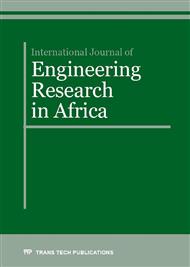[1]
Mathews; F.L. & Rawlings, R.D. Composite Materials: Engineering and Science. Boca Raton: CRC Press (1999).
Google Scholar
[2]
Mackerle J. Smart materials and structures - a finite element approach - an addendum: a bibliography (1997 - 2002), Modelling and Simulation in Materials Science and Engineering, Vol. 11, Nr. 5 (2003).
DOI: 10.1088/0965-0393/11/5/302
Google Scholar
[3]
Ferrara M., Cardillo M. Materiali intelligenti, sensibili, interattivi, Lupetti, Milano (2008).
Google Scholar
[4]
Thompson B. S., Gandhi M. V. Smart materials and structures, Chapman & Hall, London (1992).
Google Scholar
[5]
Moiseyev, Valentin N. Titanium Alloys: Russian Aircraft and Aerospace Applications. Taylor and Francis, LLC. p.196 (2006).
Google Scholar
[6]
Day M., Gehry, Dassault and IBM Too, in AEC Magazine, (09/10 2003).
Google Scholar
[7]
Emsley J. Titanium". Nature, s Building Blocks: An A-Z Guide to the Elements. Oxford, England, UK: Oxford University Press (2001).
Google Scholar
[8]
Information on http: /www. archdaily. com/Windswept Installation / Charles Sowers Studios (2014).
Google Scholar
[9]
Gevorkian, P. Sustainable energy systems engineering: the complete green building design resource McGraw Hill Professional (2007).
Google Scholar
[10]
Richards B. S. Enhancing the performance of silicon solar cells via the application of passive luminescence conversion layers. Solar Energy materials & Solar cell 90 (2006) 2329 - 2337.
DOI: 10.1016/j.solmat.2006.03.035
Google Scholar
[11]
Zhiyong F.; Razavi, H., Do, J., Moriwaki, A., Ergen, O., Chueh, Y., Leu, P., Ho, J., Takahashi, T., Reichertz, l., Neale, S., Yu, K., Wu, M., Ager, J., Javey, A., Three-dimensional nanopillar-array photovoltaics on low-cost and flexible substrates, Nature Materials 8, Nature Publishing Group, (2009).
DOI: 10.1038/nmat2493
Google Scholar


